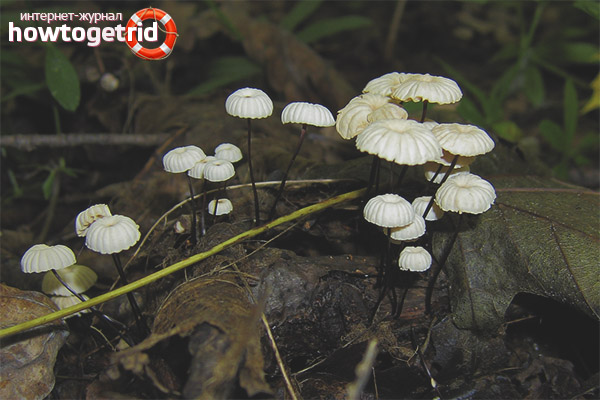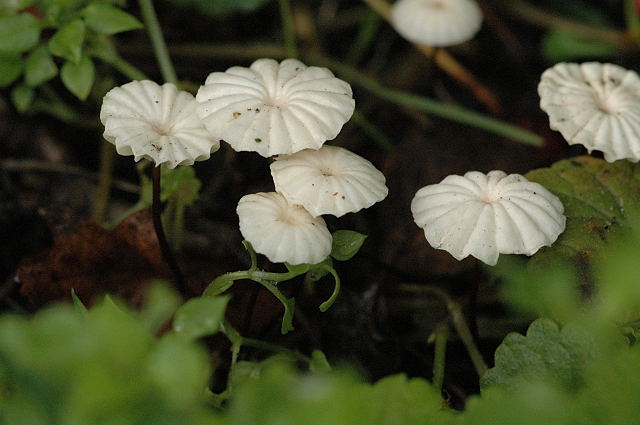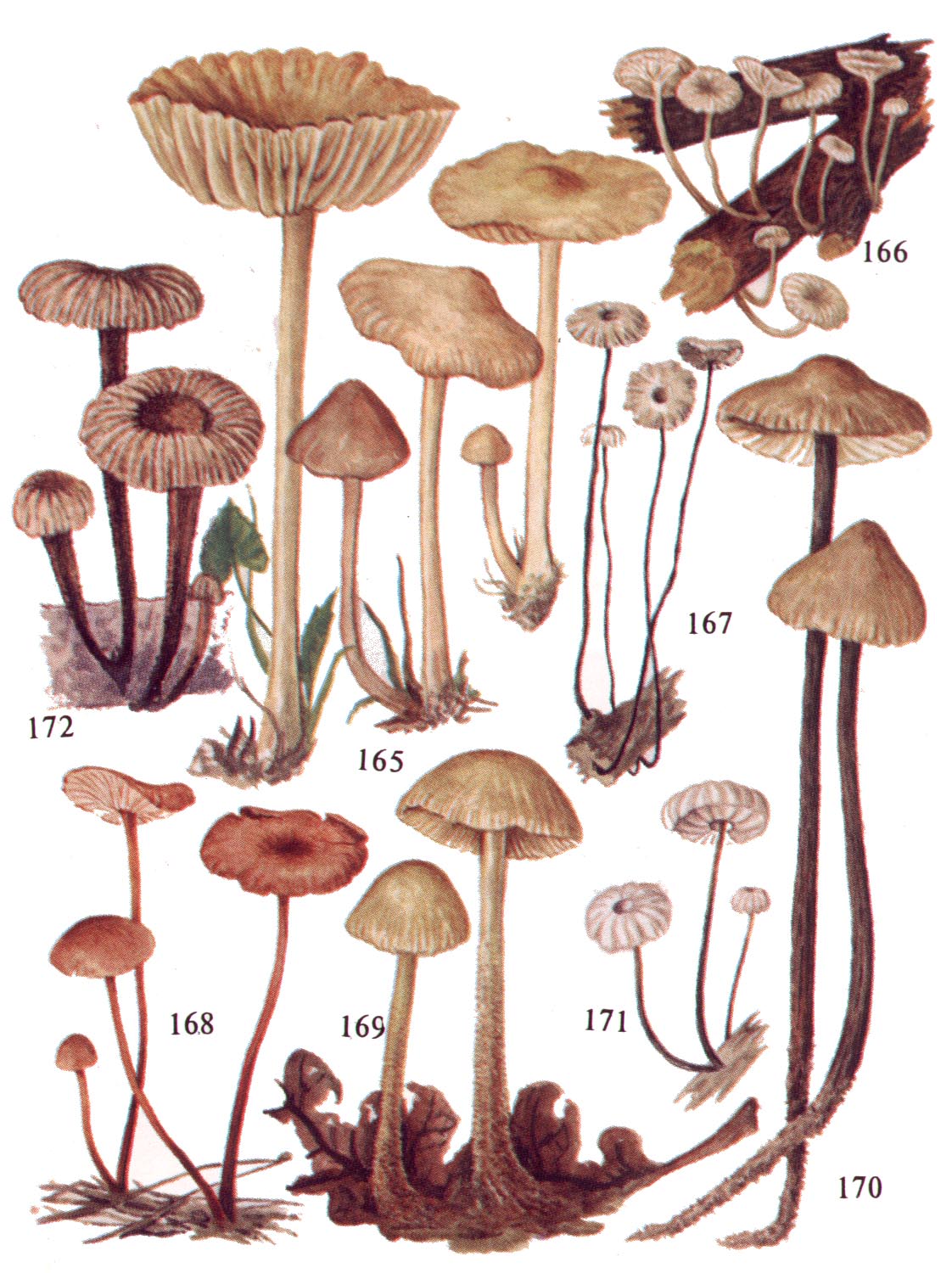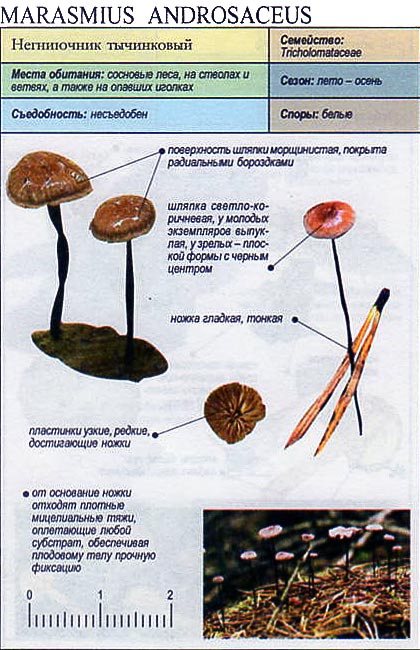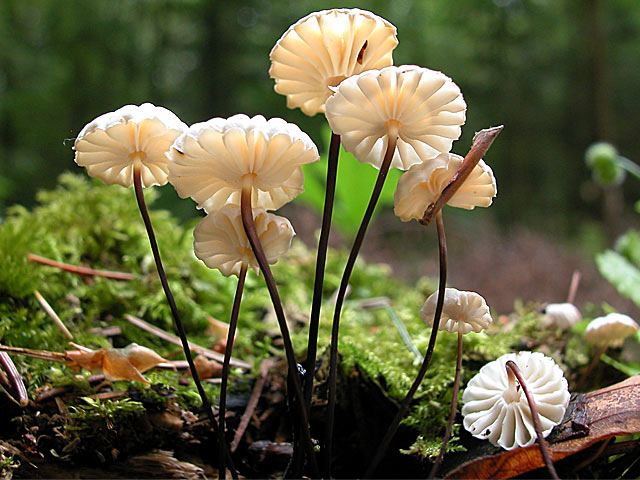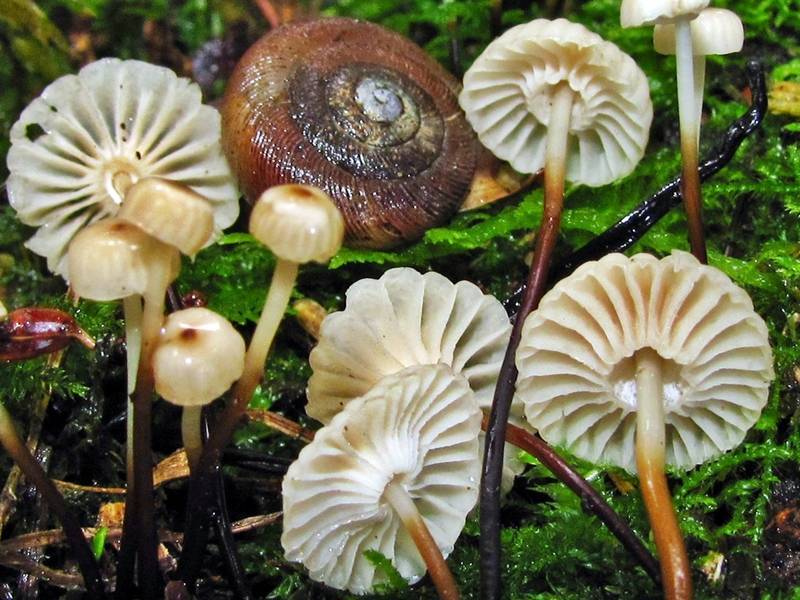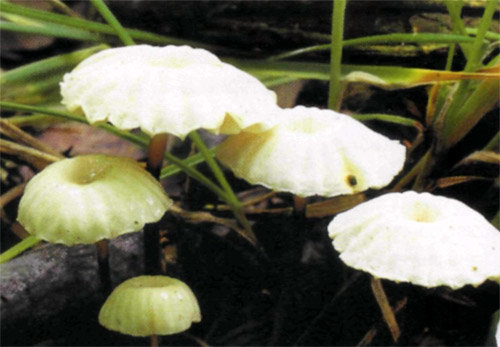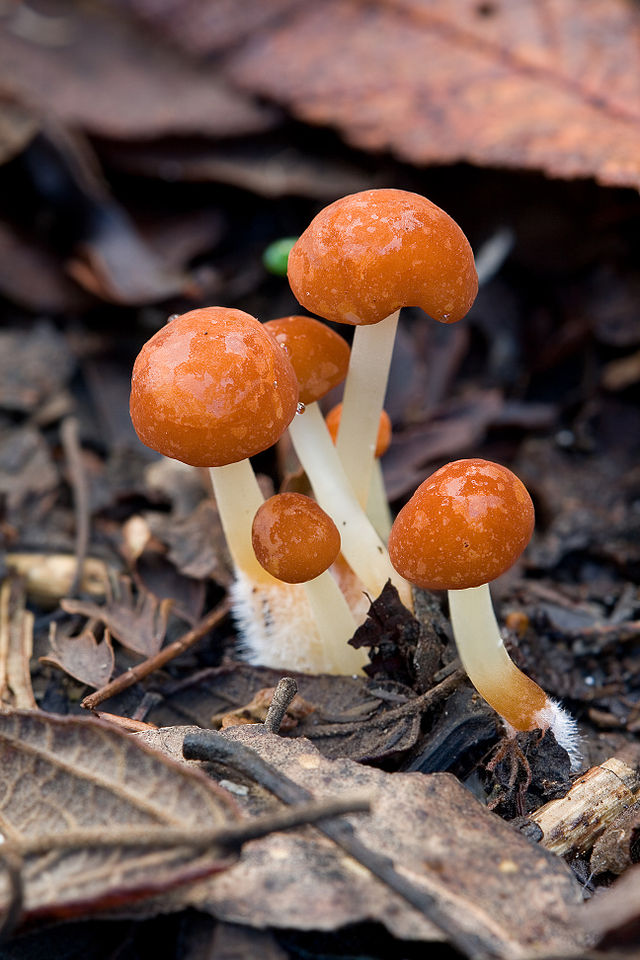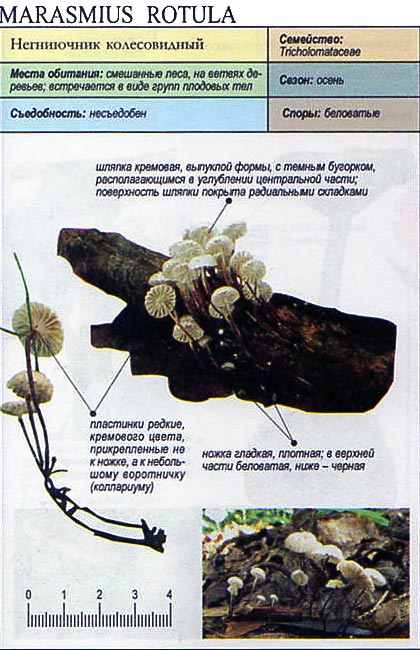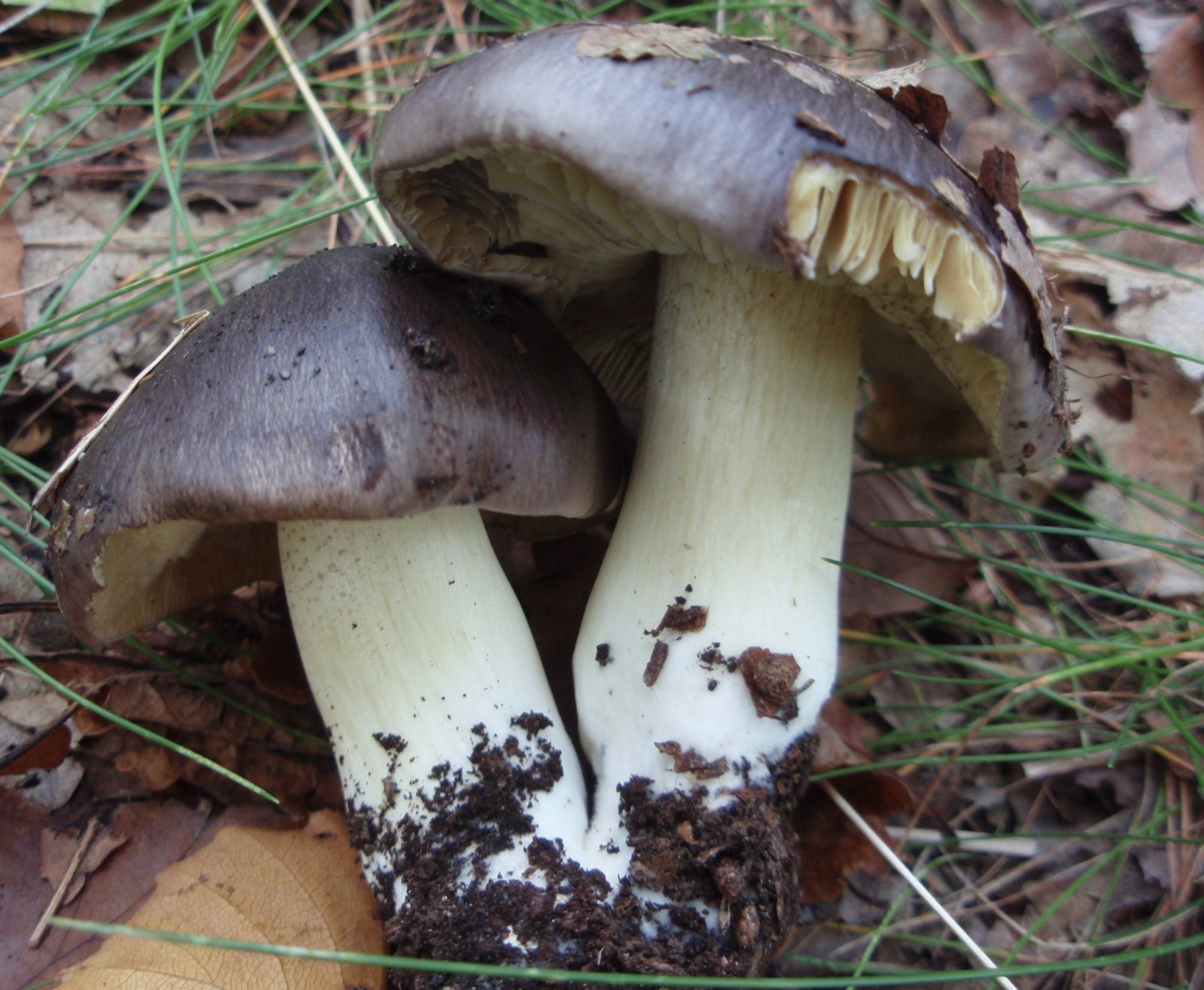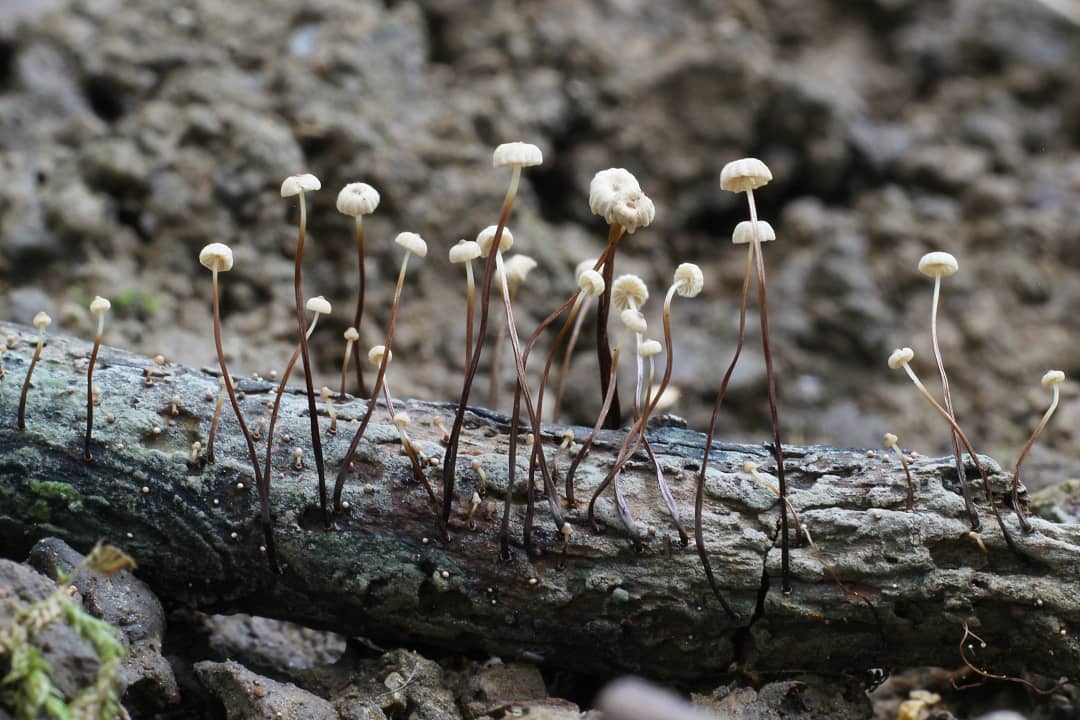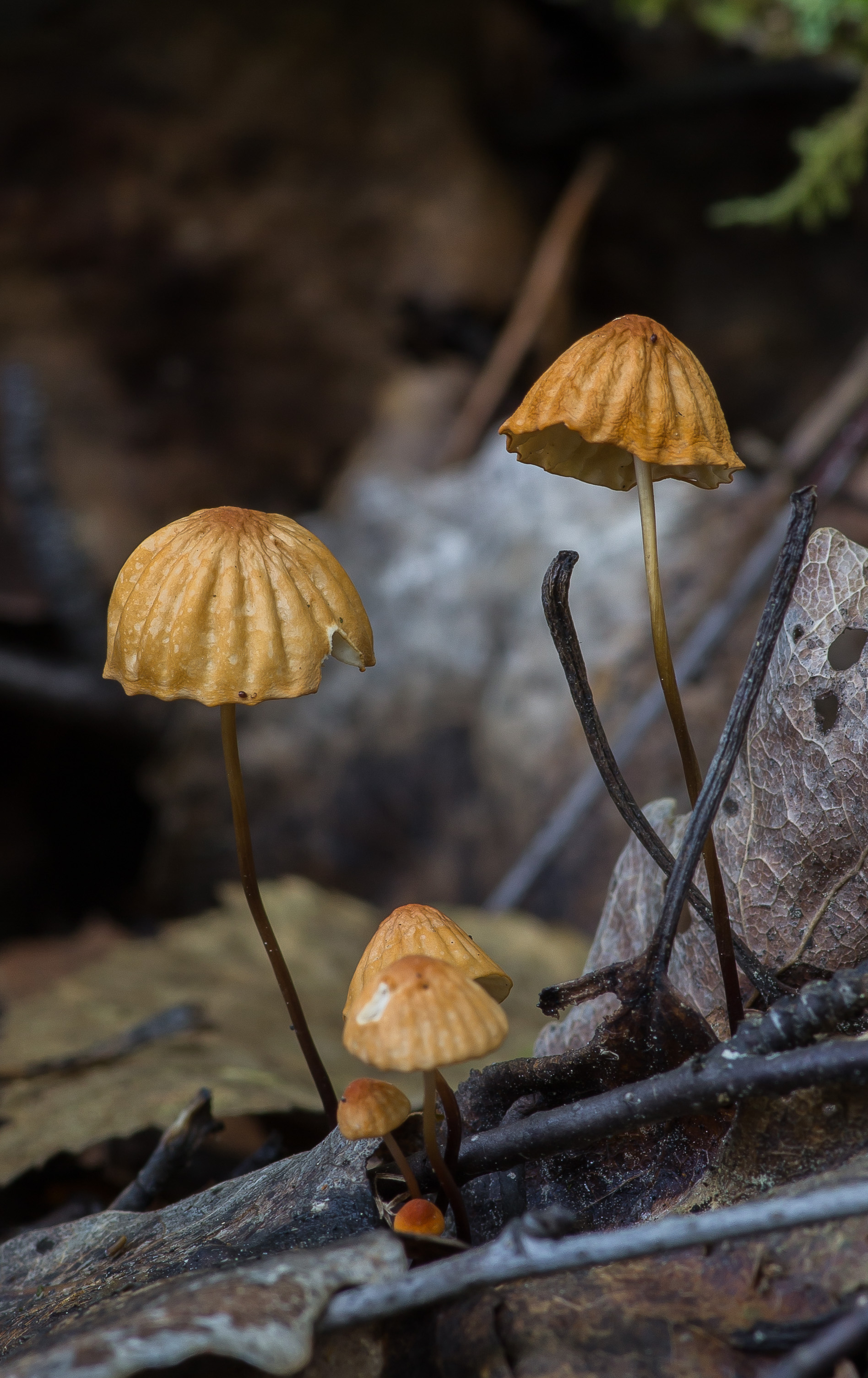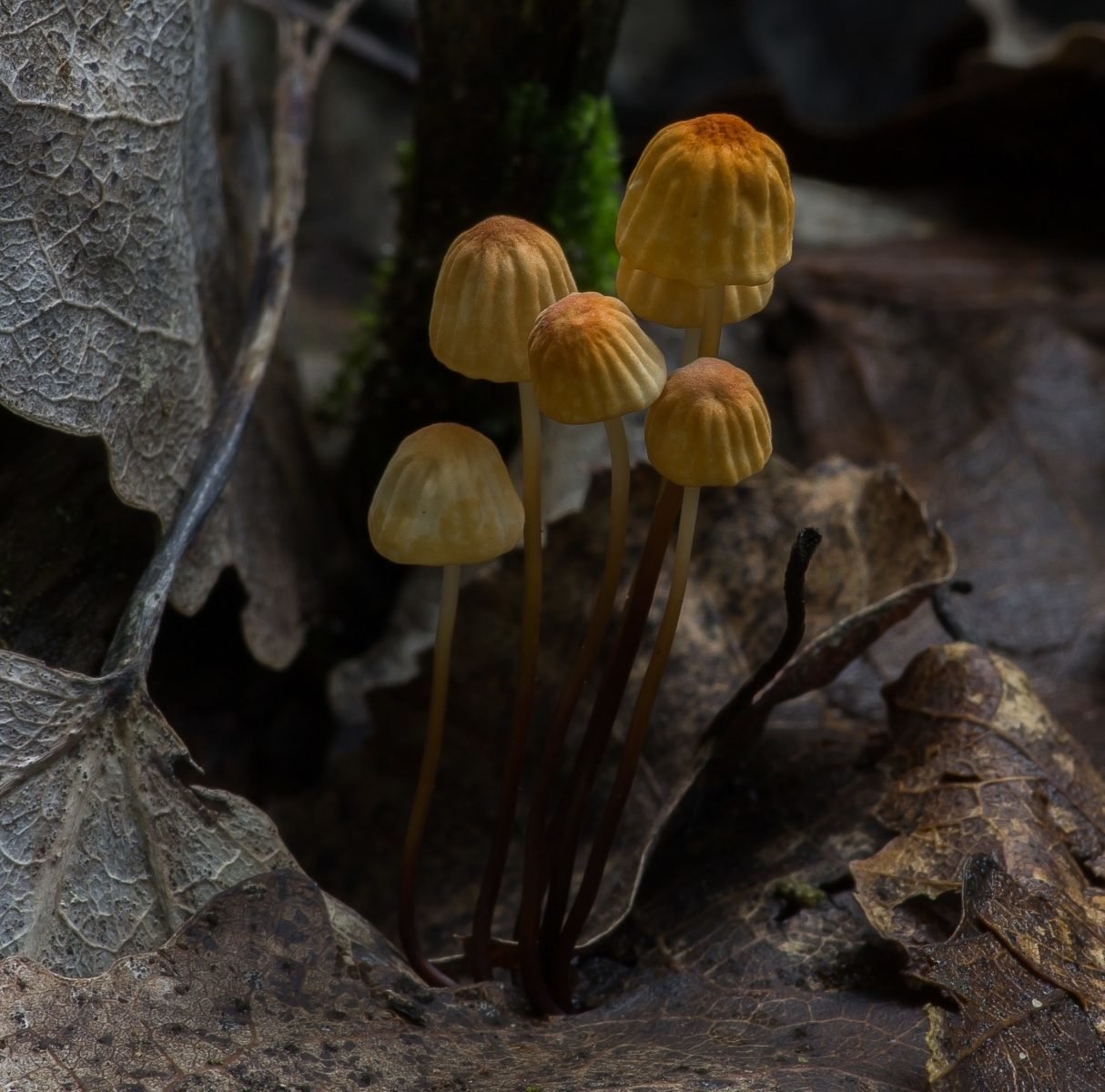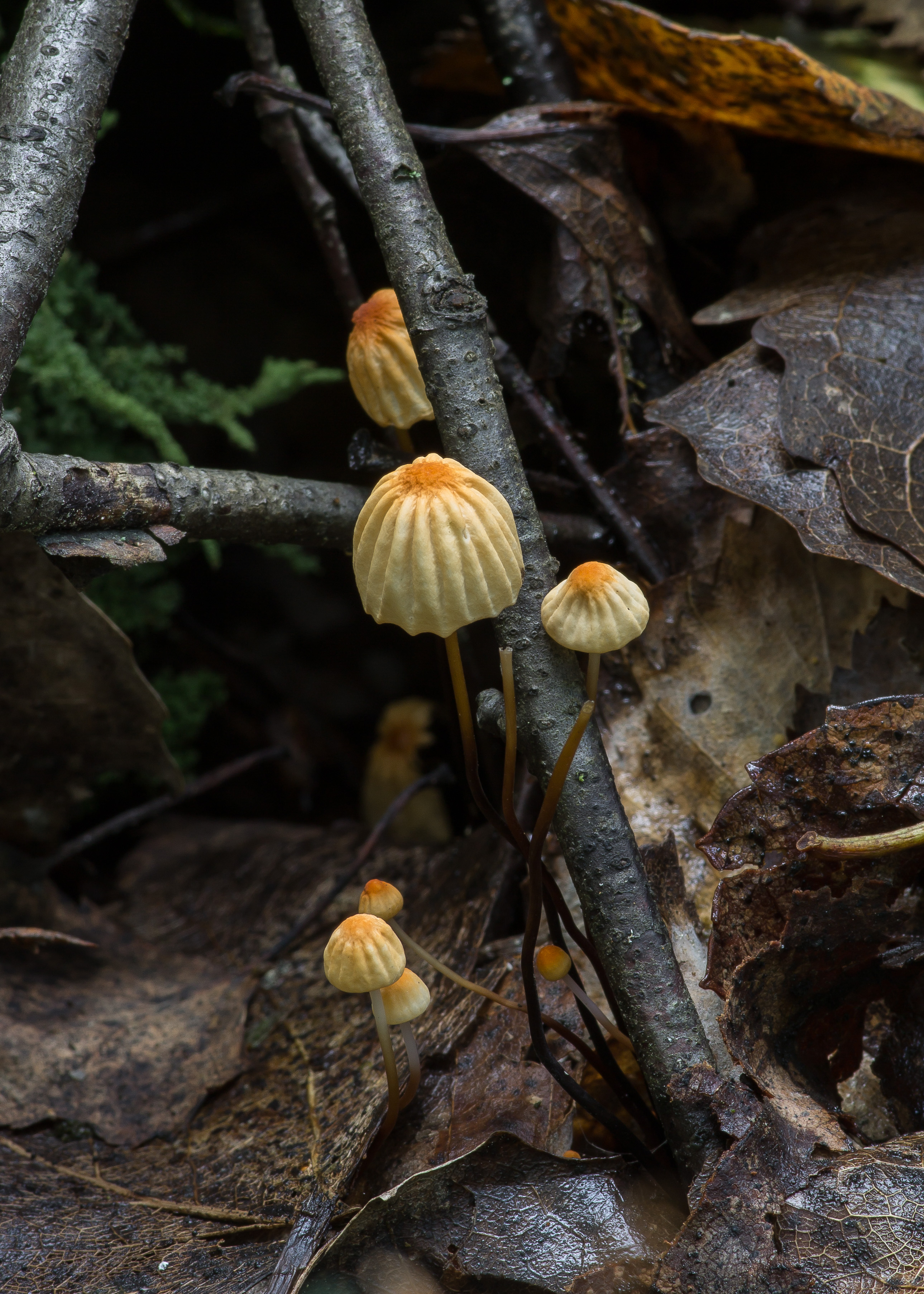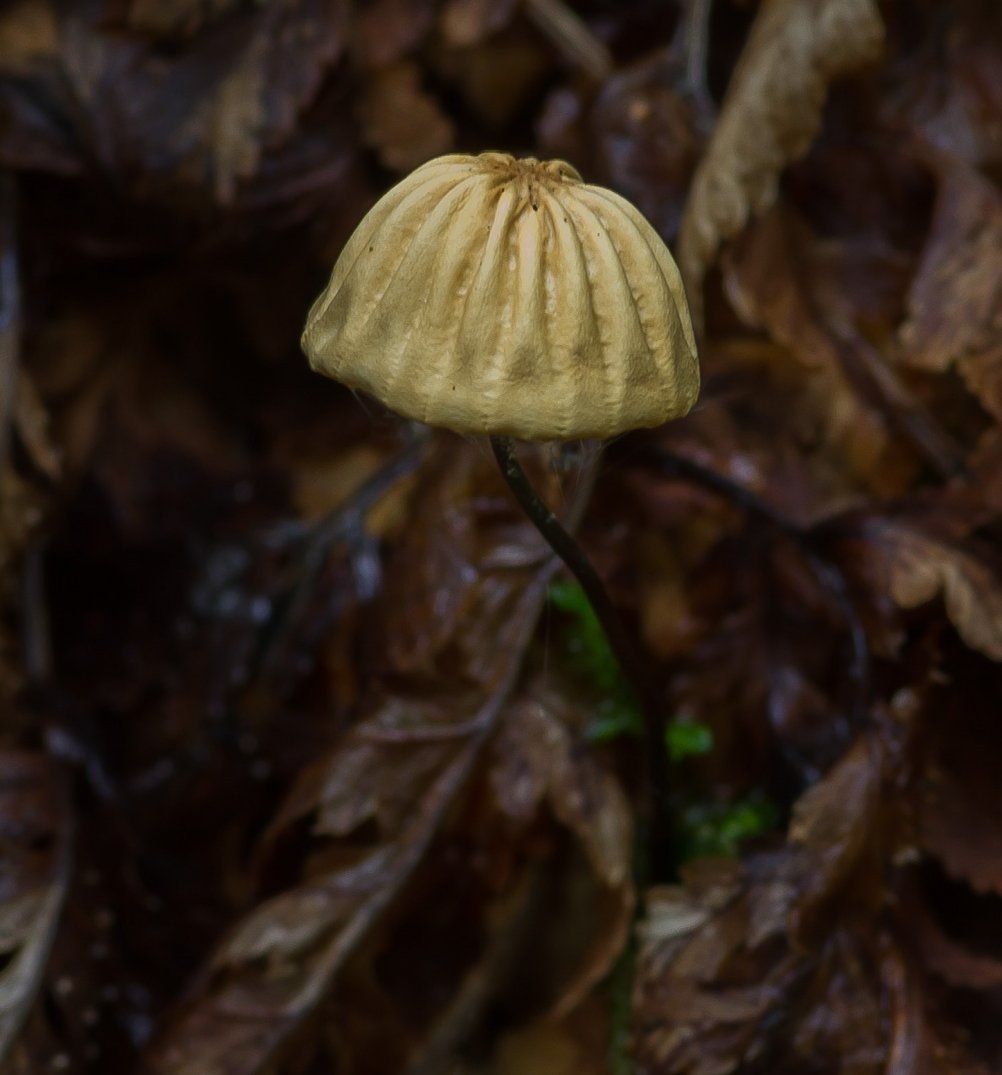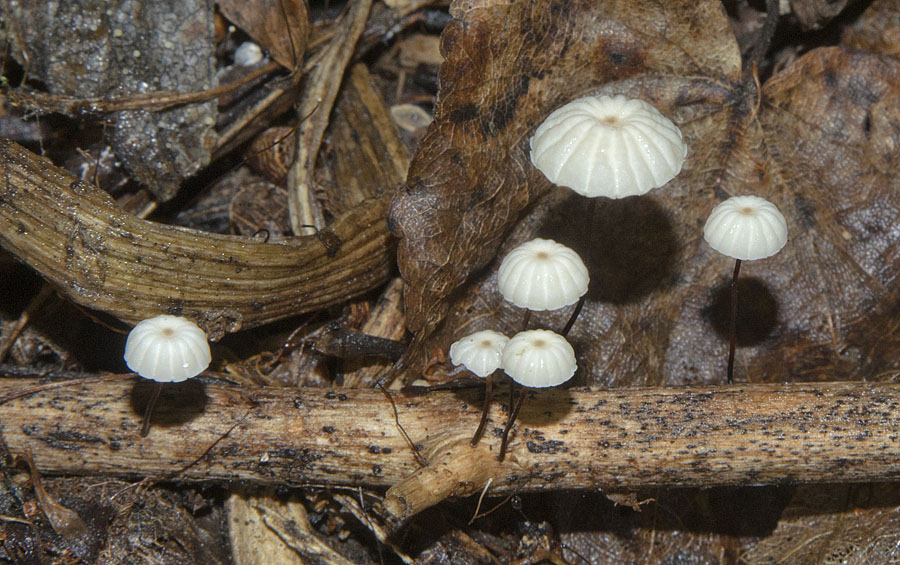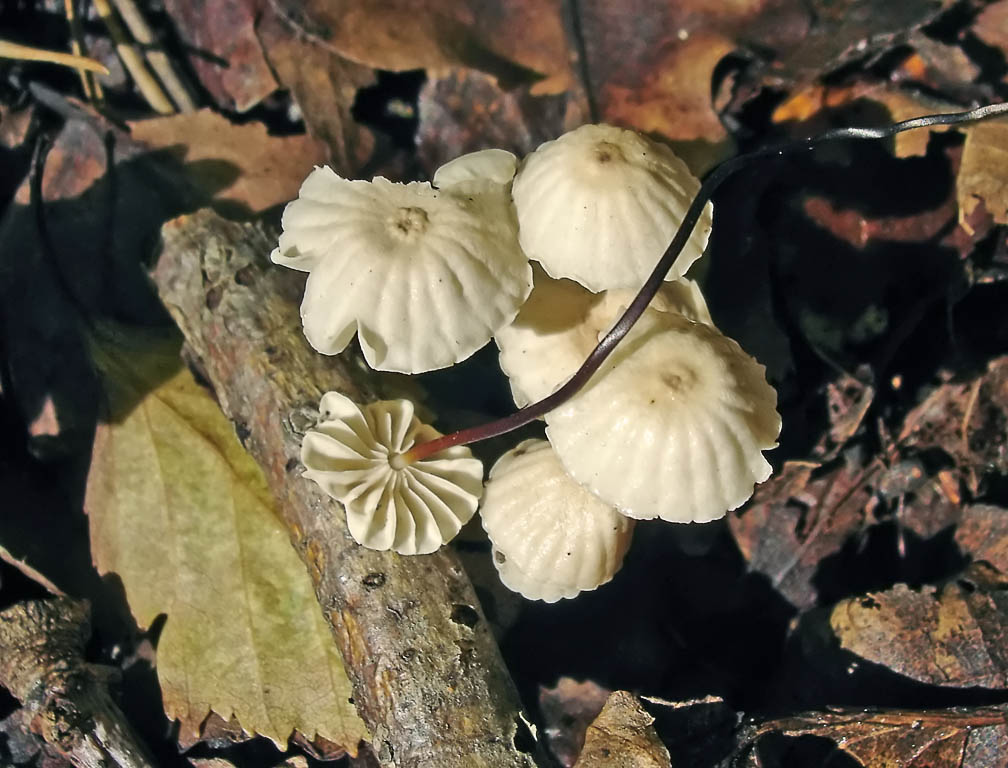Wheeled Nebnichnik - description, poisonousness of the mushroom
Wheeled non-fungus is an inedible species of mushrooms belonging to the non-fungus family. The Latin name for this species is Marasmius rotula.
Description
The cap of representatives of this type of mushroom is rather modest in size and reaches only 10 -15 mm in diameter. At the beginning of development, the shape of this part of the fungus is spherical, with growth it straightens and becomes more extended. In the central part of the cap, you can see a characteristic, albeit narrow, but rather deep depression. The surface of the cap itself has a fibrous structure, which makes it possible to clearly see all its details (tubercles, depressions). At the first glance at the mushroom, it may seem that the cap of the non-pot has absolutely no pulp, nevertheless, the latter is very thin and almost visually inseparable from the lamellar body. At the beginning of growth, the cap of the specimens is very light; with the growth of the fungus, it acquires a gray-yellow color. The aroma of the pulp, although weak, is quite sharp.
White plates are located with small gaps, most often grow to the characteristic collar bordering the mushroom leg. The spore powder has the same color as the lamellar body.
The Negnichnik has a rather thin leg, the length of which reaches 80 mm. This part of the mushroom is dark in color, almost black at the base.
Similarities with other species
Often this type of inedible mushroom is confused with Bullar's non-fungus, which has almost the same appearance (white color of the fruiting body, and a characteristic wheel-like shape). Nevertheless, the main difference between the wheel-like non-nipple is the presence of a pronounced collar located in the upper part of the leg, to which the plates descending from the lamellar body are attached.
Edibility
According to the available information, the wheel-shaped nonnium does not belong to the poisonous species of mushrooms, however, it is also not used in cooking, which is due to its very modest size.
Features of the view
The main feature of this type of mushroom is that during dry periods the non-fungi dry out almost completely, however, this does not mean their complete death. With the onset of the rainy season, the representatives of this species are completely restored to their previous form, and they begin to bear fruit and grow again.
I would like to draw your attention to the fact that this type of mushroom, in fact, has no practical value. The only thing that scientists stand out is an enzyme like MroAPO contained in this mushroom, which is a kind of biosensor used for the analysis of aromatic substances.
Other non-burners
The Marasmius family of mushrooms includes about 500 different species, and only a small part of them are edible. The rest of the species, as a rule, are not collected, often the reason for this is the unattractive appearance of the mushrooms and their modest size.
Such a species as the most delicate non-pot is a modest-sized fungus that does not have any nutritional value. At the beginning of development, specimens of this species have a hemispherical cap, which straightens out with the growth of the fungus. In adult mushrooms, in the center of the cap there is a small tubercle of a characteristic dark brick color. The body of the cap is rather thin, the edge is wavy with rare radial folds. At the beginning of development, the cap is white; it darkens with the growth of mushrooms. The leg, like the cap, is of a deep brown color. The peak of fruiting of this type of non-nippers is from mid-summer to mid-autumn. Most often, these mushrooms are found in mixed forests.
Spherical refractory: photo and description
| Name: | Spherical |
| Latin name: | Marasmius wynnei |
| Type of: | Edible |
| Synonyms: | Marasmius wynnei, Chamaeceras wynnei, Chamaeceras wynneae |
| Systematics: |
|
Spherical Negnium is an edible member of the Negnium family. The Latin name for this specimen is Marasmius wynnei.
What does the spherical non-iron pot look like?
The fruiting body of the spherical nonnium is represented by a small white cap and a thin stem of a dark shade. The spores are ellipsoidal, smooth and colorless.
Description of the hat
In a young mushroom, the cap is convex, with age it becomes prostrate. It differs in a rather small size, which varies from 2 to 4 cm. The surface is smooth and white, with aging it can acquire a gray-purple hue. The edges are uneven, ribbed. On the inside, rare, white and pale gray plates are located high.
Leg description
The leg of the spherical non-nylon is rather short, its maximum length reaches about 4 cm, and the thickness is 2 - 2.5 mm. Slightly widened at the top. At the base, the color of the leg is brown, smoothly turning into light, matching the shade of the upper part.
Where and how it grows
The active development of this species falls on the period from July to October. The spherical iris prefers deciduous, mixed and coniferous forests. As a rule, it grows on deciduous litter, less often it grows on conifers.
Is the mushroom edible or not
Belongs to the category of edible mushrooms. It is believed that this specimen is suitable for use in food in any form, however, it is preferable to boil or salt it.
Doubles and their differences
The spherical iris has external similarities with the following varieties of forest gifts:
- Amanita muscaria that is poisonous. At a young age, it is difficult to confuse it, since at the stage of maturation, the cap is hidden by a veil, but with age it opens and acquires similar features with the species in question. One of the main differences from the globular nonnium is the rather large size of the fruiting body. So, the diameter of the cap of the fly agaric is more than twice and is about 10 cm. In addition, even an inexperienced mushroom picker will notice a cup-shaped volva near the base of the leg, which belongs to a poisonous mushroom.
- Common garlic - has a similarly shaped cap, however, a distinctive feature is the frequent arrangement of the plates, as well as a noticeable speck of a darker color located in the center of the cap. In addition, the double has a pronounced smell of garlic, for which it received the corresponding name. Edible.
Conclusion
It is possible to distinguish the globular nonnium from other mushrooms by its short brown stalk, rare plates and a white hat. You can meet him in almost any forest, as well as on lawns and in artisanal thickets. Having seen such a specimen, you should not pass by, since it belongs to the edible gifts of the forest.
Hymnopus water-loving
In mid-May, in forests rich in conifers, yellowish-buffy tiny mushrooms are born, taken by some mushroom pickers for mushrooms, others for toadstools. Nevertheless, the Water-loving Gymnopus does not belong to either edible mushrooms or poisonous mushrooms, but you can safely put it in your basket.
Hymnopus water-loving
Hymnopus water-loving - Gymnopus aquosus
In another way, such a hymnopus is called the Water-loving Colibia, Watery Hymnopus, Watery Colibia or Water-loving Negniychnik.
Description
Mushroom cap
In his youth, the Water-loving Negniyichnik builds up a convex hat, which eventually opens to a flat-outstretched state with downcast edges. The diameter of the "headgear" ranges from 20 to 60 mm. The hat edge in adolescence is even, later it often becomes wavy.
Hat surfaces are smooth and translucent. They are colored in a pale ocher, yellowish brown, pale brown, ocher, and sometimes orange-cream shade. In rainy weather, the hat absorbs moisture, becoming covered with wet spots or soaked in its entirety and acquiring a dark color.
Inside the caps there is a delicate whitish pulp, which is distinguished by its firmness and elasticity.
Hat bottoms of mature water-loving Colibia are speckled with frequent free plates. In adolescence, the plates grow to the legs in whole or in part. They are pale cream, white or yellowish in color. When spores ripen on them, the plates become richly creamy. Along with long plates, short ones are present in the hymenophore.
The water-loving hymnopus reproduces by elongated, smooth, droplet-shaped spores contained in a light creamy spore powder.
Stipe
The graceful leg of Colibia watery reaches 30-80 mm in length and 2-4 mm in thickness. It has the shape of a cylinder, expanding downward and forming a kind of bulb, on which white fluffy particles of mycelium with pinkish or ocher mushroom filaments are visible. The leg is painted to match the color of the hat surface, but it can also be pinkish.
Growing places
The water-loving iris prefers places with swampy soils or groundwater flowing close to the surface. It is found in conifers and mixed forests with conifers and broadleaf trees.
He takes a liking to any environment - soil with woody humus, wood residues, leaf and coniferous litter, bryozoans, grassy places, bark overgrown with moss.
Depending on the climate, the mushroom bears fruit from the second half of May to the end of November.
Edibility
The pulp of Colibia water-loving has a faint aroma and an almost indistinguishable taste, but some scientific works indicate a sweetish taste of the mushroom.
Gymnopuses of this type are suitable for eating in any form.
Similar types and differences from them
The water-loving hymnopus resembles the following edible and conditionally edible mushrooms:
Colibia wood-loving
They are so similar to each other that it is possible to find the differences between these species only with the help of a microscope.
Colibia yellow-lamellar
It is also difficult to distinguish it from Colibia watery, but there are still differences:
- It has no bulbous expansion at the base.
- Its mushroom filaments are colored not in pink or ocher color, but in an uneven white - ocher: white fragments often alternate with ocher ones.
- It grows in any forests with rotten wood, often found in lowlands and parks with a soil rich in organic matter, and places with sparse grass cover.
But, since all doubles are edible, it is not scary to confuse them with a water-loving counterpart.
Edible non-nippers globular
Spherical non-flammable mushrooms are edible mushrooms that are suitable for eating in any form, but they are most delicious when boiled and salted.
The similarity of spherical non-fungi with other mushrooms
Some mushroom pickers confuse spherical non-fungi with small mushrooms - garlic mushrooms. But there is nothing dangerous in such a similarity, because the garlic plants, like the non-nippers, belong to edible mushrooms. You can distinguish a garlic by its red-brown cap and a pronounced garlic smell, as well as the often located plates.
Other mushrooms of this genus
The blood-headed firebrand is an inedible mushroom. It is one of the rarest mushrooms in the world. A distinctive feature of the blood-headed nonnie is the ability to glow in the dark. There is very little information about these rare mushrooms.
They have large, deep red caps and thin legs. The hat is shaped like an umbrella or a dome. The surface of the cap consists of symmetrically spaced stripes. Inside the hat is white.
Bloodheads grow on old fallen branches. There is no information about the toxicity of these mushrooms, but they are inedible species.
The wheel-shaped iris is an inedible species.This mushroom is characterized by an extremely small cap - its diameter is 0.5-1.5 centimeters. In youth, the shape of the cap resembles a hemisphere, and over time it becomes prostrate. Its surface is radially fibrous.
The color of the cap is pure white, but with age it turns gray-yellow. The pulp is thin, it is practically absent. The leg is thin, up to 8 centimeters long. The color of the leg is black or brown.
The wheel-shaped non-nippers choose places of high humidity. They settle on dead trees in deciduous and coniferous forests. These mushrooms are found in large groups, quite often. Since they are very small in size, they are difficult to detect.

